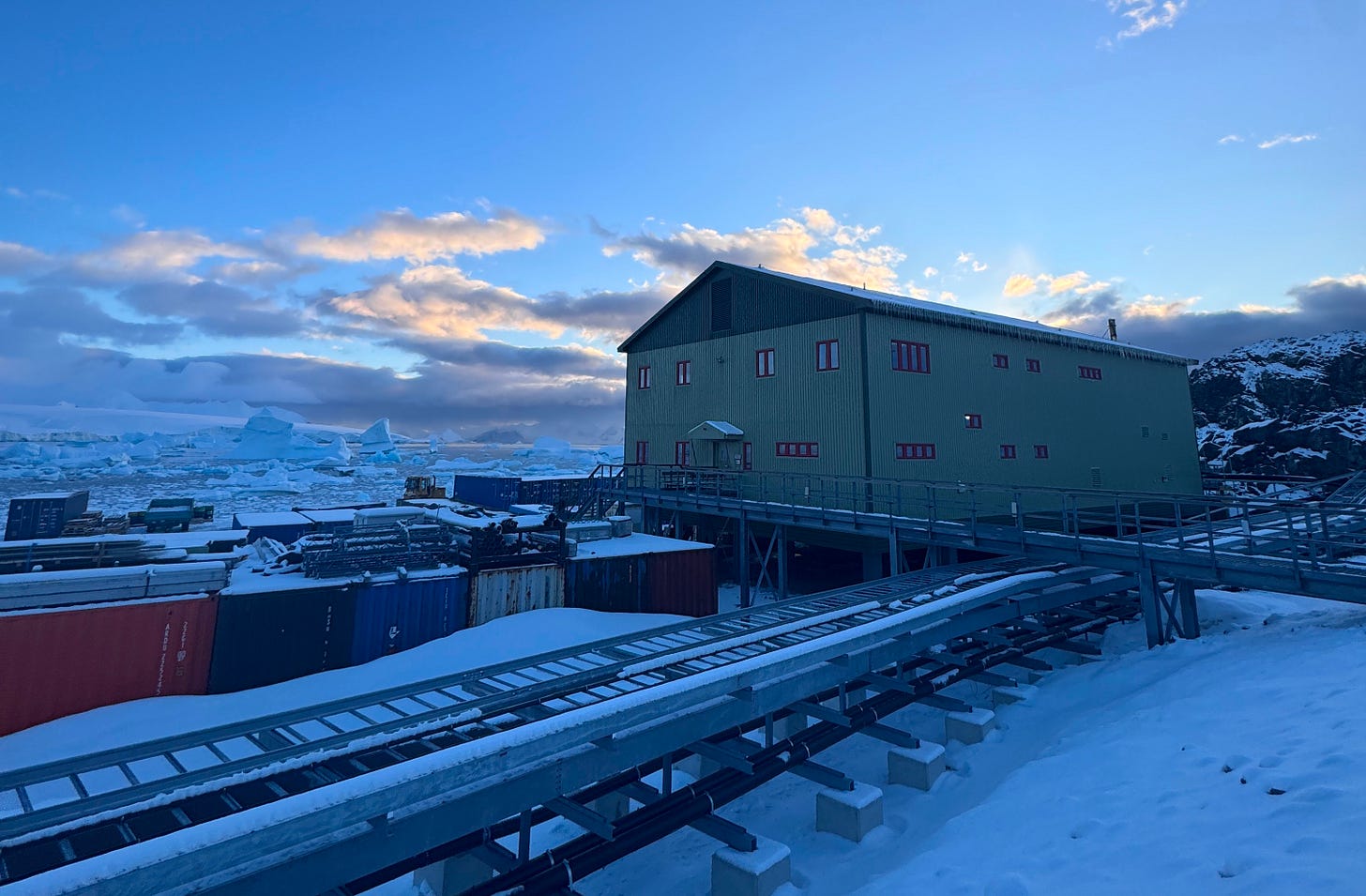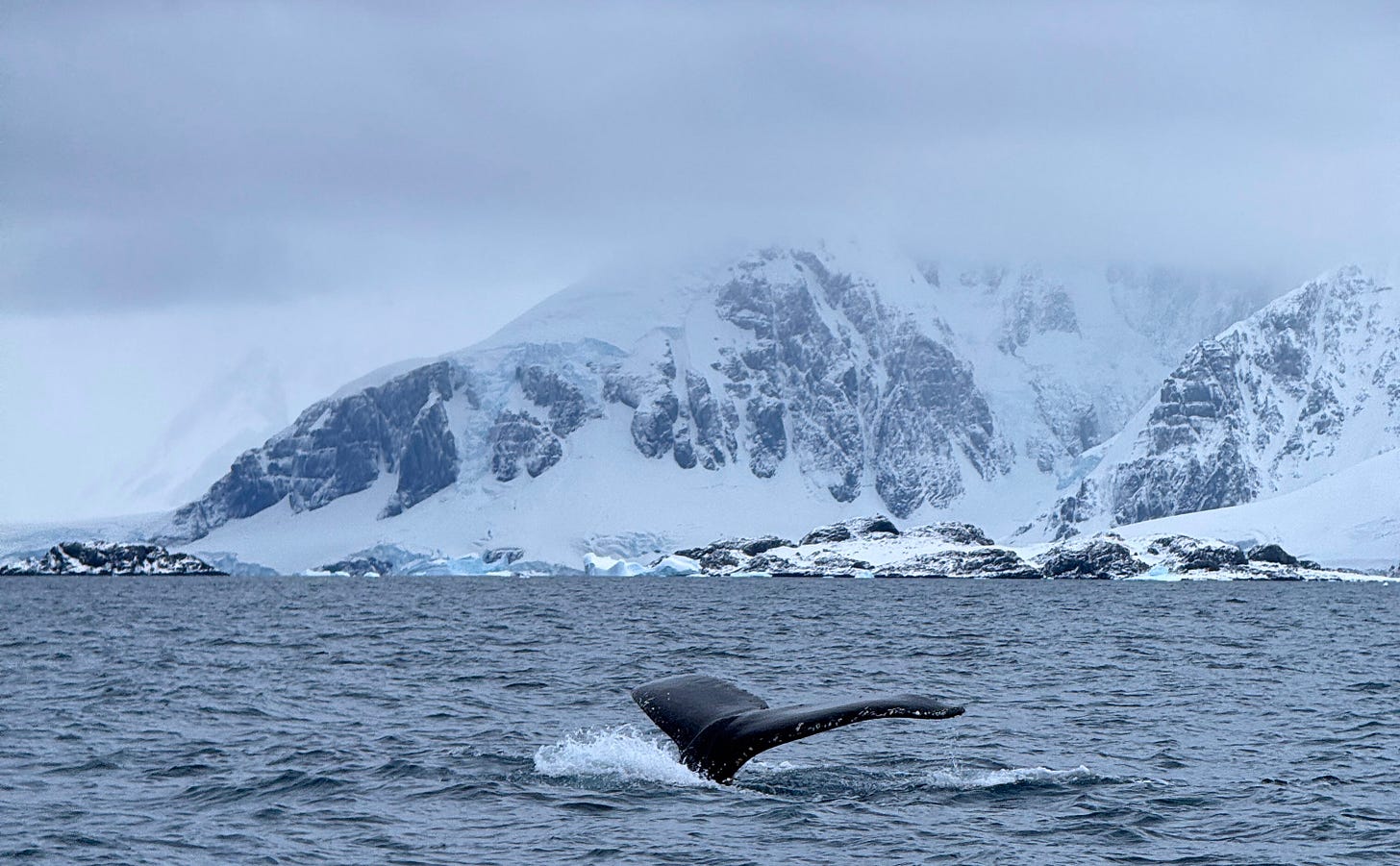We were warned that the snow would return. And now, it has. Rothera awoke earlier this week to a dusting of snow around station, only just covering the ground below it. This wasn’t unusual—we get periodic snow showers, which throughout summer typically melt within hours. Indeed, last week we even got rain showers (becoming increasingly normal as the climate warms), which turned most of station to a thin mud. However, this snow is now here to stay.
Over the following days, snow continued to fall. Life was made more challenging by accompanying 40 knot winds. One of our boats, which had been happily living outside without a cover, could no longer be left in place. Fitting boat covers is nearly cruel and unusual punishment at the best of times—doing it in a blizzard certainly is. I was a few hours too late, and the boat was already part snow-filled.

Station is now totally covered. As snow slides down slanted roofs, huge icicles form, growing as they hang. Walkways are compacted down, turning icy after so many feet have traversed across them. Certain slopes are becoming deadly slippery (I haven’t totally wiped out yet), and other parts of station will soon become impossible to drive wheeled vehicles around without becoming stuck.

So what’s next? Quite a lot is still to come this summer season. We’re entering the second half of summer—the half without flying. ‘Winter Trips’ for those of us over-wintering here begin next week. These are an opportunity to explore Adelaide Island with a trained field guide. It’s essentially a holiday from station, with the possibility of mountaineering, skidoo-ing, or just relaxing. Much of this is done from a tent and towed sledge system, so is unlike anything commercially available.
Various teams are making adjustments for winter. The vehicles team are beginning to winterise their assets, as are we in the boatshed. I’m going to be reducing our fleet from four to two over the next two months, storing the out of service boats in the aircraft hangar. This means that there’ll be fewer ‘live’ assets to look after, boats don’t have to be stored outside, and the tractor can live inside the boatshed.

However, normal(ish) operations will continue throughout winter. We are still out multiple times a week, boating and diving. As winter approaches, the weather will become increasingly changeable, and the bay steadily more icy. Eventually (though not for a few months), the sea will begin to ice over on really still nights. With cold enough temperatures, and settled enough weather, we will get some thick sea ice—the kind that stops boating, but allows skidoo travel.
Next month, the Sir David Attenborough will be back in. This will be its fourth call out of six. It’ll make a change from the recent boats we’ve been dealing with, one of which was sailing yacht Ocean Tramp. It will also bring post and fresh food with it. We haven’t received post here since December, and fresh food was last in before the flying season ended, a couple of weeks ago.
Something different…
A picture I saw recently on LinkedIn. It seems like Leopard Seals are interacting a lot with tourist Zodiacs and kayaks, increasingly so recently. We’ve had a couple show up shortly before or during our dives, which ends diving in that location. Antarctica’s apex predator (alongside Orca), they certainly aren’t worth taking risks with, and BAS’ approach is among the most conservative—especially when you consider that some tour operators go snorkelling with them!
However, they are phenomenal to observe from the safety of a boat. They are huge—in particular, their heads are massive, almost the same thickness as the rest of their body. They are a bit wary of us initially, until (I think) they work out that we aren’t a threat to them, at which point they visibly relax. And their speed underwater is incredible—they appear just like a flash of grey swimming beneath the boats. Overall though, it has been a very quiet season for Leopard Seals sightings. Many people on station haven’t yet seen one!







